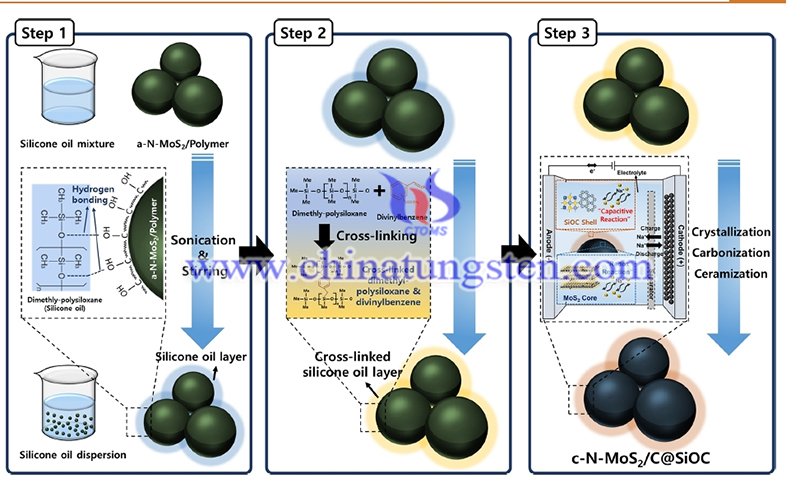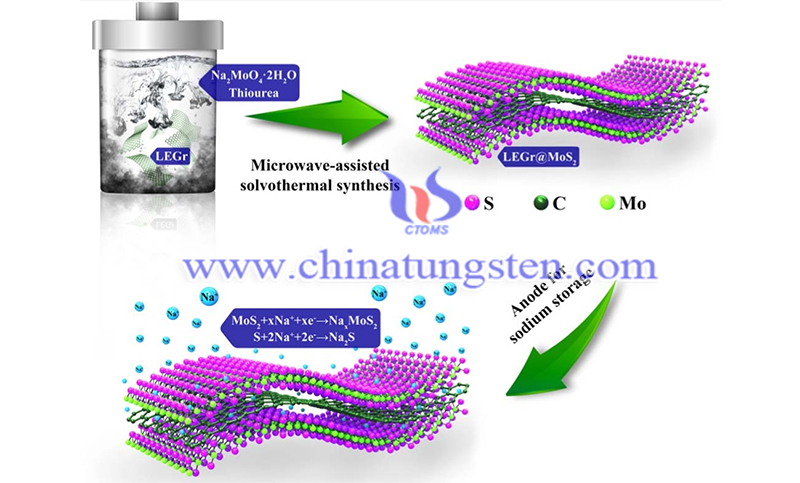KIST Develops MoS2 Anode Material for Sodium-Ion Batteries
- Details
- Category: tungsten‘s News
- Published on Thursday, 01 July 2021 23:49
The Korea Institute of Science and Technology (KIST) announced that a team led by Dr. Sang-Ok Kim from the Institute’s Energy Storage Research Center has developed a new, high-performance, and economical MoS2 anode material that can be used in sodium-ion batteries, making it more cost-effective than lithium-ion batteries. The energy storage capacity of this new material is 1.5 times that of the graphite anode in commercial lithium-ion batteries. Moreover, when the rapid charge-discharge rate reaches 10A/g, its performance will not decrease even after 200 cycles, according to foreign media reports.
The reserves of sodium in the earth's crust are more than 500 times that of lithium. Compared with lithium-ion batteries, sodium-ion batteries are 40% lower in cost and are regarded as next-generation batteries. However, compared with lithium ions, sodium ions are larger and cannot be stably stored in the graphite or silicon negative electrode of the battery. Therefore, it is necessary to develop a new type of high-capacity anode material.

Researchers use molybdenum disulfide (MoS2), this metal sulfide can be used as a candidate material for high-capacity anode materials. MoS2 can store a large amount of electrical energy, but due to its high resistance and unstable structure, it cannot be used during battery operation. Dr. Sang-Ok Kim's team overcame this problem by using silicone oil to create ceramic nano-coating, which is a low-cost, environmentally friendly material. Through a simple process, the MoS2 precursor and the silicone oil are mixed, and the mixture is heat-treated to obtain a low-resistance, high-stability heterogeneous structure.
Electrochemical performance tests show that the storage capacity of the material is at least twice that of the uncoated MoS2 material (about 600mAh/g), and it can still maintain this level of capacity after 200 rapid charge-discharge cycles. Such excellent performance comes from the ceramic nano-coating with high storage capacity. The coating imparts high conductivity and hardness to the surface of MoS2, lowers the resistance of the material, and improves structural stability.

Dr. Sang-Ok Kim of KIST said: “Through nano-coating surface stabilization technology, the high resistance and structural instability of MoS2 anode material can be successfully solved. Therefore, we can develop a sodium-ion battery that can stably store a large amount of electrical energy. Our method uses cost-effective and environmentally friendly materials, if they can be adjusted for large-scale manufacturing of negative electrode materials, can reduce production cost and promote the commercialization of sodium-ion batteries for large-capacity storage devices.
- < Prev
- Next >
Link to this article:KIST Develops MoS2 Anode Material for Sodium-Ion Batteries
Reprint Statement: If there are no special instructions, all articles on this site are original. Please indicate the source for reprinting:Tungusten,Thanks!^^

